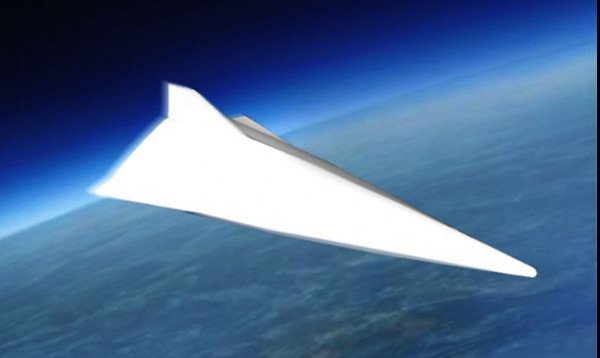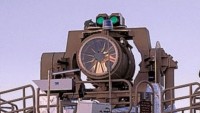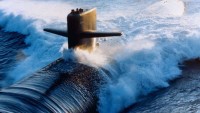China Might Have Operational Hypersonic Missiles by 2020
| Arthur Dominic Villasanta | | Jul 03, 2016 08:46 PM EDT |
Chinese hypersonic glide vehicle
A U.S. congressional commission has reported China might be able to deploy the DF-ZF experimental hypersonic glide vehicle (HGV) as warheads on Chinese ballistic missiles as early as 2020.
The U.S.-China Economic and Security Review Commission said China's HGV program was "progressing rapidly." It estimated China could deploy a hypersonic boost and glide missile by 2020 and hypersonic powered missiles by 2025.
Like Us on Facebook
The U.S.-China Economic and Security Review Commission was created by the U.S. Congress in 2000 to monitor, investigate and submit to Congress an annual report on the national security implications of the bilateral trade and economic relationship between the U.S. and China.
Formerly designated WU-14, the DF-ZF is a hypersonic missile delivery vehicle that's been flight-tested by the Chinese seven times from January 2014 to April 2016. Six of these tests are known to have been successful.
The Ministry of National Defense of the People's Republic of China confirmed the first test in 2014 but claimed it was "scientific" in nature. All test launches of the DF-ZF have taken place at the Taiyuan Satellite Launch Center in Shanxi Province, the major long-range missile testing center for the People's Liberation Army (PLA).
China seems to prefer using the DF-ZF as a precision-strike weapon on its ballistic missiles to penetrate the sophisticated layered air defenses of U.S. Navy carrier strike groups. DF-ZF, however, can also be nuclear armed.
Reports say the DF-ZF might be capable of speeds between Mach 5 (6,100 km/h) and Mach 10 (12,400 km/h). Experts say the DF-ZF is dangerous since it will almost be impossible to intercept by conventional missile defense systems that track incoming objects using satellite sensors and ground and sea radar.
Instead of plunging on a predictable path, HGVs glide towards their targets, reducing the time they can be detected and destroyed. Gliding makes HGVs more maneuverable and extends their range by almost 50 percent.
This advantage is the major reason the United States is hell bent on developing and deploying laser weapons. Lasers are known to provide an effective defense against HGVs.
China, the U.S. and Russia are engaged in a "hypersonic arms race."
Tagshypersonic glide vehicle, HGV, U.S.-China Economic and Security Review Commissio, china, People's Liberation Army
©2015 Chinatopix All rights reserved. Do not reproduce without permission
EDITOR'S PICKS
-

Did the Trump administration just announce plans for a trade war with ‘hostile’ China and Russia?
-

US Senate passes Taiwan travel bill slammed by China
-

As Yan Sihong’s family grieves, here are other Chinese students who went missing abroad. Some have never been found
-

Beijing blasts Western critics who ‘smear China’ with the term sharp power
-

China Envoy Seeks to Defuse Tensions With U.S. as a Trade War Brews
-

Singapore's Deputy PM Provides Bitcoin Vote of Confidence Amid China's Blanket Bans
-

China warns investors over risks in overseas virtual currency trading
-

Chinese government most trustworthy: survey
-

Kashima Antlers On Course For Back-To-Back Titles
MOST POPULAR
LATEST NEWS
Zhou Yongkang: China's Former Security Chief Sentenced to Life in Prison

China's former Chief of the Ministry of Public Security, Zhou Yongkang, has been given a life sentence after he was found guilty of abusing his office, bribery and deliberately ... Full Article
TRENDING STORY

China Pork Prices Expected to Stabilize As The Supplies Recover

Elephone P9000 Smartphone is now on Sale on Amazon India

There's a Big Chance Cliffhangers Won't Still Be Resolved When Grey's Anatomy Season 13 Returns

Supreme Court Ruled on Samsung vs Apple Dispute for Patent Infringement

Microsoft Surface Pro 5 Rumors and Release Date: What is the Latest?














